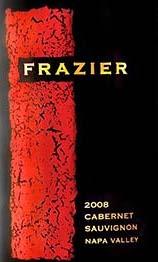
External search
Google (images)
Wine Advocate
Wine Spectator
Burghound
Wine-Searcher
Vintages
2010
2009
2008
2007
2006
2005
2004
2003
2002
2001
2000
1999
1998
1997
1996
1995
From this producer
Show all wines
All tasting notes
|
| Drinking Windows and Values |
| Community Tasting History |
| Community Tasting Notes (average 91.4 pts. and median of 92 pts. in 9 notes) - hiding notes with no text | | | Tasted by merryberry on 8/23/2021 & rated 92 points: I drank this 7 years ago and liked it then. I still like it. Herbs and spices abound, with a streak of red cherries. Lots of tannins left to provide structure and a long dry finish. Plenty of time left, just wish I had more. (147 views) | | | Tasted by fah on 7/26/2015 & rated 89 points: My wife and I drink about 250 bottles of wine a year, mostly cabs. Bought this wine at Costco for $30. I give it 88 pts for richness and 90 points for finish/tannins. That means it's out of balance. Aging it more will soften the tannins but then the richness in the grapes will also go down. Wine Enthusiast gives it 93 points which unrealistic. I would give it about a $16 value. (1949 views) | | | Tasted by crootto on 7/23/2015 & rated 92 points: Good open ups (1771 views) | | | Tasted by merryberry on 10/11/2014 & rated 92 points: Nearly black with ruby highlights. Plum, cassis, sweet oak, and sage nose. Full bodied, blueberries, baking spices, copious fine grained tannins, black cherries, dark chocolate, and a medium to long finish. Excellent. (2089 views) |
| Frazier Producer websiteCabernet SauvignonCabernet Sauvignon is probably the most famous red wine grape variety on Earth. It is rivaled in this regard only by its Bordeaux stablemate Merlot, and its opposite number in Burgundy, Pinot Noir. From its origins in Bordeaux, Cabernet has successfully spread to almost every winegrowing country in the world. It is now the key grape variety in many first-rate New World wine regions, most notably Napa Valley, Coonawarra and Maipo Valley. Wherever they come from, Cabernet Sauvignon wines always seem to demonstrate a handful of common character traits: deep color, good tannin structure, moderate acidity and aromas of blackcurrant, tomato leaf, dark spices and cedarwood.
Used as frequently in blends as in varietal wines, Cabernet Sauvignon has a large number of common blending partners. Apart from the obvious Merlot and Cabernet Franc, the most prevalent of these are Malbec, Petit Verdot and Carmenere (the ingredients of a classic Bordeaux Blend), Shiraz (in Australia's favorite blend) and in Spain and South America, a Cabernet – Tempranillo blend is now commonplace. Even the bold Tannat-based wines of Madiran are now generally softened with Cabernet SauvignonEstateIn the United States, "Wines with “estate bottled” designations must: a) also designate an appellation of origin or an AVA, and both the vineyards and the winery must be located there; b) the grapes must come from vineyards owned or controlled by the winery; and c) the wine must have been produced, from crush to bottle, in a continuous process without leaving the winery’s premises."
- WINE LABEL FAQS: A QUICK SUMMARY OF LABEL DESIGNATION RULES" by David E. StollUSAAmerican wine has been produced since the 1500s, with the first widespread production beginning in New Mexico in 1628. Today, wine production is undertaken in all fifty states, with California producing 84% of all U.S. wine. The continent of North America is home to several native species of grape, including Vitis labrusca, Vitis riparia, Vitis rotundifolia, and Vitis vulpina, but the wine-making industry is based almost entirely on the cultivation of the European Vitis vinifera, which was introduced by European settlers. With more than 1,100,000 acres (4,500 km2) under vine, the United States is the fourth-largest wine producing country in the world, after Italy, Spain, and France.California2021 vintage: "Unlike almost all other areas of the state, the Russian River Valley had higher than normal crops in 2021, which has made for a wine of greater generosity and fruit forwardness than some of its stablemates." - Morgan Twain-Peterson Napa Valley Napa Valley Wineries and Wine (Napa Valley Vintners)Napa ValleySt. Helena |
|




